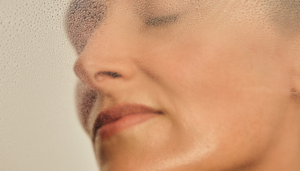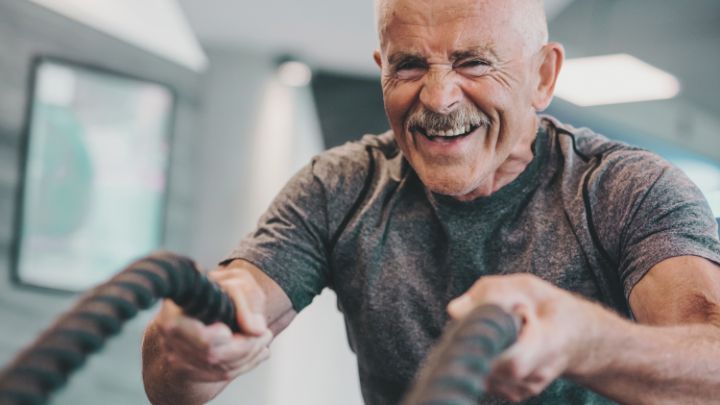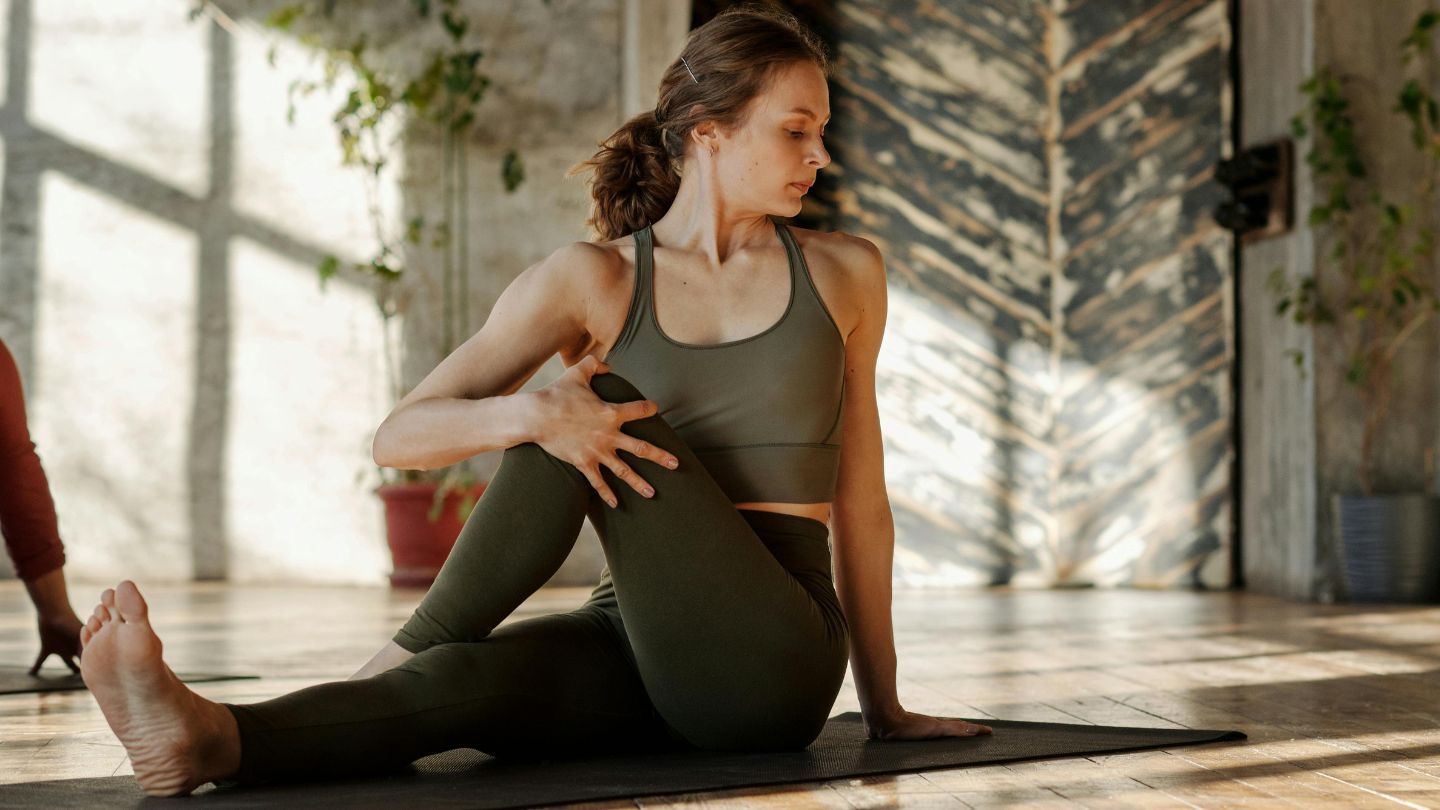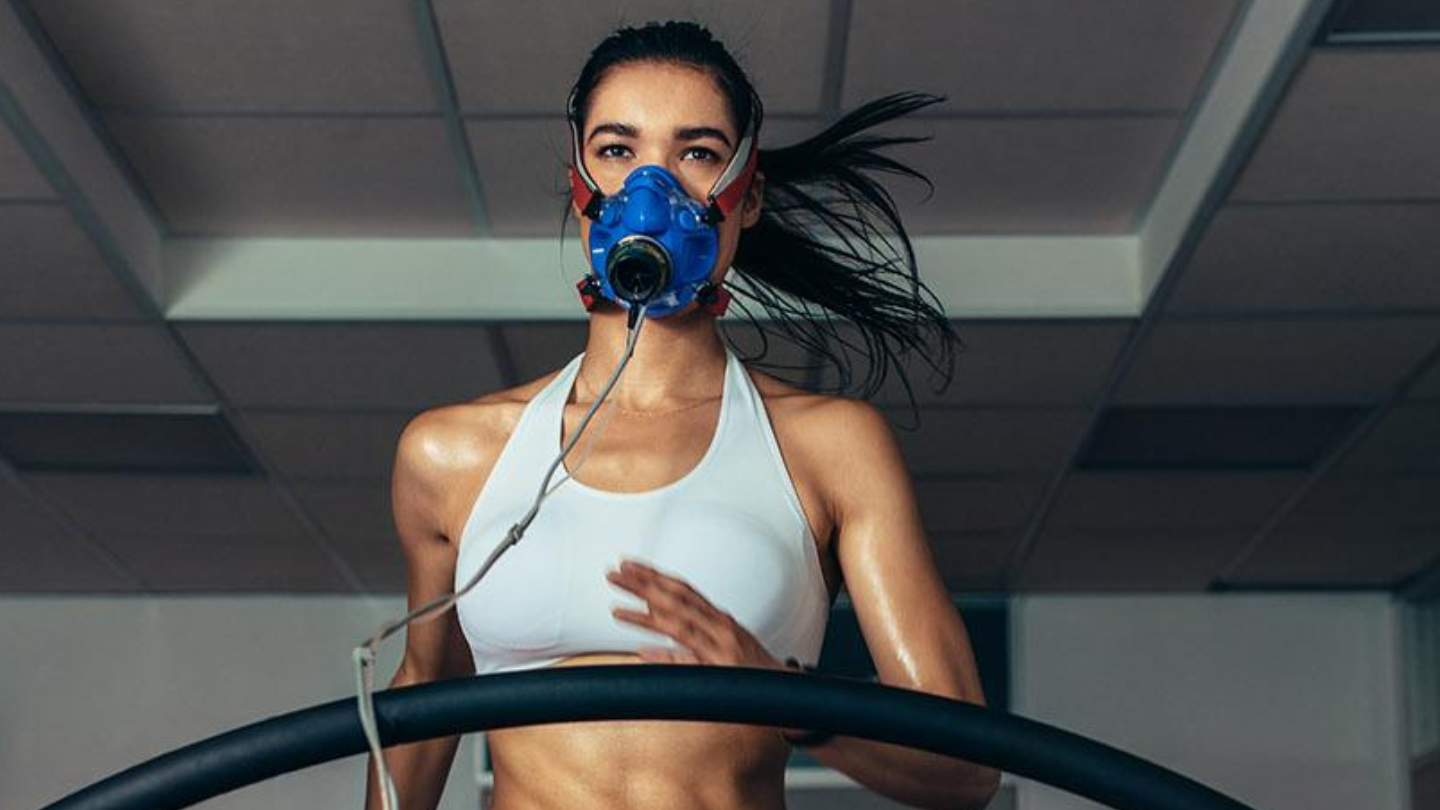In recent years, as Jane entered her 40s, she found herself increasingly overwhelmed by the pressures of modern life.
Balancing a demanding job, family responsibilities, and the ever-present digital noise, she began to notice the creeping signs of lifestyle diseases—persistent fatigue, weight gain, and stress-induced insomnia.
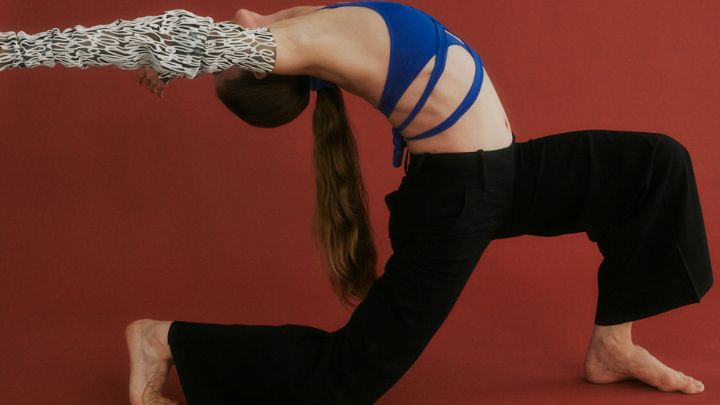
Like many others, Jane was unknowingly caught in a cycle of accelerated cellular ageing, a silent contributor to conditions like diabetes, heart disease, and depression. Seeking a holistic solution, Jane discovered yoga.
Originating from ancient traditions and evolving through centuries, yoga has emerged as a powerful intervention against the ravages of modern life.
Needless to mention, yoga is not just about flexibility or fitness; it’s a comprehensive approach to health. By incorporating certain physical postures, breath control, and meditation, yoga addresses both your mind and body, reducing stress and improving biomarkers of ageing.
For Jane and countless others, yoga offers a pathway to rejuvenation, promoting longevity and a vibrant, healthier life. Will you become the new Jane? Discover how yoga can boost longevity.
In this article
Free guide to reverse your biological age

- Master the science of rejuvenation.
- Apply proven tips to turn back the clock.
- Transform your health with top longevity specialists.
What are the origins of yoga?
Yoga’s roots can be traced back to ancient India, around 1000 BCE, with texts offering various definitions for postures (asanas), breath control, meditation, and spiritual practices.
Originating from the rich traditions of Indian philosophy, yoga has evolved significantly over the centuries.
In fact, during the British colonial period, there were attempts to suppress the practice of yoga amongst Indians. However, yoga’s profound benefits could not be ignored, and it has since been globally recognised for its contributions to health and well-being.
Traditional yoga practices
The most commonly practised form today, Hatha yoga, primarily focuses on physical postures. The Pradīpikā, a Sanskrit manual written in 1350, describes 15 primary postures—7 seated and 8 in other positions—along with 69 combined postures, totalling 84 asanas.
Over time, these practices have been adapted for various health conditions, including ageing, pregnancy, chronic pain, diabetes, stroke, heart failure, and brain health.
Modern styles of yoga, such as Vinyasa, Iyengar, Ashtanga, and Kundalini, have refined these postures, placing different emphases on alignment, breath control, speed, and flow.
These styles also incorporate non-physical elements like meditation, relaxation, guided imagery, and specific lifestyle commitments.
For those with medical limitations, adapted yoga practices like Gentle Chair Yoga, group interventions with psychoeducation, and Hatha yoga for older adults focus on accessibility and safety.
Modifications depend on medical conditions, with practices like Prenatal Yoga and Gentle Years Yoga designed to accommodate specific needs, ensuring that yoga remains a versatile and inclusive approach to improving physical and mental well-being across diverse populations.
Ibrahim reverses bioage by 6.5 years with Avea

- Uncover how Ibrahim turned back the clock.
- Learn the secrets of cellular health.
- Start your own age-defying routine today.
Ageing and yoga
As you age, your body naturally becomes less flexible, less stable, slower, and weaker. Muscles, fascia, and skin lose their elasticity, and endurance levels decrease. This necessitates adjusting your physical goals and expectations.
Yoga can help alleviate or relieve many age-related symptoms. Whether you’re dealing with heart issues, reduced lung capacity, decreased bone density, muscle loss, back pain, or an artificial knee, yoga can make a positive difference in how you feel.
Your approach to yoga should adapt to your physical changes. The yoga sutras, which offer ancient wisdom, remind us that yoga poses should be steady and comfortable.
This simple guideline frees you from the notion that your yoga practice must look a certain way. Whether you can do a handstand, a lunge, or a balance pose, or none at all, your practice is uniquely yours. Find strength and ease in what works best for you.
Whilst we often focus on the negative aspects of ageing, we rarely acknowledge the wisdom, confidence, and life experience that come with it. Few people actually wish to be twenty-one again.
With each passing year, we gain enhanced self-confidence, better body image, greater empathy, and improved decision-making—coincidentally, these are also benefits of a regular yoga practice.
Want to embrace the positive changes yoga brings, both on and off the mat? Learn the benefits of practising it for your longevity.
Yoga and heart health
Our cardiovascular system undergoes several changes with time. These include stiffening of the arteries, the heart muscle not relaxing as well, a reduced response to stress, and less effective blood vessel dilation.
Functionally, this means that as you get older, you may start having a lower capacity for physical exertion, with decreased maximum oxygen uptake, peak heart output, heart rate, and ejection fraction (how well your heart pumps blood).
Plus, the risk of heart disease increases, especially in frail older adults, who often exhibit glucose intolerance and insulin resistance, raising cardiovascular risks. Yoga can be very effective in managing these age-related cardiovascular changes.
Studies show that practising yoga can significantly lower blood pressure in middle-aged and older adults, including those with hypertension.
A review of 49 studies with over 3500 participants found that yoga sessions held more than 3x a week reduced systolic blood pressure by an average of 11 mmHg and diastolic blood pressure by 6 mmHg. Another review focusing on older adults over 60 with high blood pressure found similar results.
Heart rate variability (HRV), which measures how well the heart responds to stress, is often reduced in frail older adults. Research on yoga’s impact on HRV has shown mixed results, with some studies indicating no significant difference compared to usual care. But, yoga has been shown to improve metabolic health, reducing blood sugar levels (hemoglobin A1c) by about 0.5%, and enhancing lipid profiles and body composition [1].
Yoga and respiratory system
As we age, our lungs become less elastic, leading to a decrease in the total surface area available for gas exchange. The chest wall becomes less flexible due to a reduction in respiratory muscle mass, stiffening of the rib cage, and curvature of the spine.
These changes result in clinically significant alterations in lung function, such as reduced airflow, air getting trapped in the lungs, and a decreased ability to transfer oxygen into the blood.
You might start experiencing difficulty in expelling air from the lungs, have a higher breathing rate, and reduced exercise capacity. For those with chronic obstructive pulmonary disease (COPD), these changes can further decrease physical activity and social interaction.
A review of 16 studies involving 1233 participants with COPD found that practising yogic breathing for 4–15 weeks improved exercise capacity, as measured by the 6-minute walk test, but had inconsistent effects on breathlessness and quality of life.
Other reviews have also noted improvements in exercise capacity and lung function, though results regarding breathlessness and quality of life were mixed.
Breathing techniques are incorporated into yoga poses or practised separately. The physical conditioning from yoga poses can strengthen respiratory muscles and improve chest alignment, facilitating better breathing.
Yogic breathing specifically strengthens the respiratory muscles and encourages efficient use of the diaphragm. It can also balance the nervous system by reducing the fight-or-flight response and enhancing the rest-and-digest state. In a nutshell, these practices can improve gas exchange in your lungs, boosting your exercise performance [2].
Make your joints feel 10 years younger
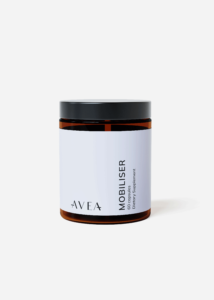
- Benefit from award-winning ingredients backed by science.
- Boost your exercise performance.
- Reduce joint pain effectively.
Yoga and nervous system
Overtime, our brains undergo several changes, including the loss of grey matter, hardening of the arteries, and other structural alterations. These changes affect our cognitive abilities, leading to slower processing speeds, reduced working memory, and difficulty in retrieving memories.
However, ageing can also bring improved wisdom and positive thinking. Cognitive and motor functions are interconnected, making it more challenging to perform tasks that require both thinking and movement simultaneously.
A meta-analysis of 15 studies on people of all ages found that yoga has a moderate positive effect on overall cognitive function, attention, processing speed, executive function, and memory.
Specifically, in older adults, yoga showed moderate improvements in memory, executive function, and attention. Additionally, yoga has been linked to better mood, reduced stress, and improved sleep.
Experienced yoga practitioners have been found to have structural changes in their brains, such as increased grey matter density in areas related to self-awareness and empathy, and greater grey matter volume in the hippocampus, which is crucial for memory. Functional brain imaging also shows that yoga increases connectivity in brain regions responsible for executive function and attention.
Prolonged stress can lead to high levels of cortisol, a hormone that can cause shrinkage of the hippocampus and accelerate cognitive decline. Yoga helps regulate stress and improve cognitive efficiency, potentially slowing down cognitive ageing.
Mindful movements and meditation in yoga might offer cognitive health benefits that go beyond those provided by traditional physical exercise [3].
Yoga and muscles
Our skeletal system undergoes significant changes throughout life, including reduced bone mass and structural changes in bone microarchitecture. This can lead to conditions such as kyphosis (curved spine), osteopenia, osteoporosis, and osteoarthritis.
Muscle mass also starts to decline in our 30s, and by the age of 70, we can lose up to 24% of our muscle mass and 40% of our motor neuron units, resulting in reduced muscle speed and power, especially in frail individuals.
A meta-analysis of 39 studies with 2325 participants aged 51 to 72 found that yoga significantly improves bone mineral density (BMD). However, another analysis of 11 studies with participants aged 45 to 78 showed no significant impact of yoga on BMD.
Yoga helps maintain BMD through poses that involve body weight resistance and balance training, although more substantial benefits may come from additional weight-bearing exercises. It’s worth noting that some yoga poses that involve spinal flexion could increase the risk of vertebral fractures, although such events are rare.
Yoga can also help prevent age-related muscle loss and sarcopenia (muscle degeneration). A meta-analysis of 22 studies with 967 participants aged 61 to 83 showed that yoga has a medium effect on improving balance and a small effect on increasing lower limb strength when compared to inactive controls.
When compared to active controls, yoga had no effect on balance, but still showed a small effect on lower limb strength. Whilst yoga focuses on functional movement and upper body strength, it might not be as effective as resistance training for muscle building.
The scientific link between yoga and longevity
Yoga practices have a profound influence on the ageing process by impacting various biological markers that help measure cellular ageing.
These biomarkers include signs of oxidative stress, DNA damage, and telomere length, which are tiny protective caps on the ends of our chromosomes. Shorter telomeres are associated with faster ageing.
1. Changes in ageing biomarkers
A recent study assessed 94 subjects over 12 weeks of a Yoga and Meditation-based Lifestyle Intervention (YMLI), had impressive results. Participants showed significant improvements in various biomarkers related to cellular ageing:
- Oxidative stress: Levels of reactive oxygen species (ROS) decreased significantly, indicating reduced oxidative stress.
- Antioxidant capacity: Total antioxidant capacity (TAC) increased, suggesting improved ability to combat oxidative damage.
- DNA damage: Levels of 8-OH2dG, a marker of DNA damage, were significantly lower.
- Telomere health: Telomerase activity, which helps maintain telomere length, increased significantly, although the increase in actual telomere length was not statistically significant.
2. Stress and inflammation markers
The programme also positively impacted stress and inflammation markers:
- Cortisol: Levels of cortisol, a stress hormone, decreased significantly.
- IL-6: Levels of interleukin-6 (IL-6), an inflammatory marker, also decreased significantly.
- Mood and brain health: Levels of β-endorphin (a mood booster), brain-derived neurotrophic factor (BDNF), and sirtuin-1 (associated with longevity) increased significantly.
3. Physical health improvements
Participants also experienced notable physical health benefits:
- Body Mass Index (BMI): The average BMI decreased from an overweight range to a healthier range.
- Gender differences: Men showed a more pronounced reduction in IL-6 and cortisol levels compared to women.
The improvements in genomic stability, telomere metabolism, and oxidative stress balance suggest that yoga can be an effective intervention for promoting longevity and preventing chronic lifestyle diseases.
Different types of yoga
Yoga encompasses various styles, each tailored to different needs and preferences:
- Hatha yoga: Emphasises basic postures and breathing exercises. Ideal for beginners due to its gentle and slow-paced nature.
- Vinyasa yoga: Features a series of poses that flow seamlessly into one another. Perfect for those who prefer a dynamic and fast-paced practice.
- Ashtanga yoga: A rigorous form of yoga with a specific sequence of postures. Suitable for those seeking a physically demanding workout.
- Restorative yoga: Utilises props to support the body in passive poses, promoting deep relaxation. Excellent for stress relief and recovery.
- Kundalini yoga: Focuses on awakening the kundalini energy through postures, breathing techniques, and chanting. Ideal for enhancing awareness and spiritual growth.
- Iyengar yoga: Known for its emphasis on precision and alignment, often using props. Suitable for those recovering from injuries or with physical limitations.
- Bikram yoga: Practised in a heated room, following a fixed sequence of 26 poses. Aimed at detoxification and enhancing flexibility.
- Power yoga: A vigorous, fitness-oriented style derived from Ashtanga yoga. Great for those seeking a challenging workout.
- Sivananda yoga: A form of Hatha yoga that incorporates a holistic approach, including proper breathing, relaxation, and a vegetarian diet.
- Yin yoga: Focuses on holding poses for extended periods to target deep connective tissues. Ideal for improving flexibility and promoting relaxation.
- Acro yoga: Combines yoga and acrobatics, performed with a partner. Emphasises trust and connection.
- Aerial yoga: Uses a fabric hammock for performing traditional poses, allowing deeper stretches and spinal decompression.
What is the best time to practise yoga?
The best time for yoga depends on your individual schedules and health goals. If you’re an early bird, embracing the serene mornings can set a peaceful tone for your day, whilst night owls might find evening sessions the perfect way to unwind after a hectic day.
Listen to your body – it knows when it needs that stretch and mindfulness. Whether you’re aiming to boost energy, enhance flexibility, or simply find a moment of calm, discovering your ideal yoga time can transform your routine into a cherished ritual.
So, when do you feel most alive and ready to flow?
- Morning: Energises the body and mind, setting a positive tone for the day. Great for boosting metabolism and mental clarity.
- Afternoon: Provides a midday energy boost and helps alleviate afternoon slumps, enhancing focus and productivity.
- Evening: Facilitates relaxation and stress reduction after a busy day, contributing to improved sleep quality.
Practical tips for integrating yoga into daily routines
1. Consistency
Establish a regular routine. Practising yoga at the same time each day helps embed it into your daily schedule, making it a natural part of your routine. Whether it’s first thing in the morning, during lunch breaks, or before bedtime, find a time that you can consistently dedicate to your practice. For instance, if you’re a morning person, try starting your day with a gentle yoga flow to energise and set a positive tone. If evenings are quieter, use that time to unwind and release the day’s stress with relaxing poses.
2. Flexibility
Adapt to your schedule. Life can be unpredictable, so it’s important to stay flexible with your practice times. If you miss your usual session, fit in a shorter practice whenever you can, even if it’s just for 10 minutes. Let’s say, you know you have a busy day ahead, try a quick lunchtime session to re-energise. On days when you have more time, indulge in a longer, more thorough practice.
3. Mindfulness
Focus on breathing and movements. Being mindful during yoga enhances its benefits. Pay attention to your breath, the sensations in your body, and the flow of your movements. This not only improves your physical practice, but also calms your mind.
4. Environment
Create a calm space. Choose a quiet, comfortable space free from distractions. This could be a corner of your living room, a spot in your garden, or a dedicated yoga room. Ensure it’s a place where you feel relaxed and focused. Set an intention for your session, such as staying present or finding inner peace. You can also design your yoga space with items that inspire you, like candles, soft lighting, or calming music. A mat, some cushions, and a few props can also enhance your practice.
Additional tips
- Set realistic goals: Define clear objectives. Set achievable goals for your yoga practice. Whether it’s improving flexibility, reducing stress, or simply moving your body, having clear objectives can keep you motivated.
- Track your progress: Keep a yoga journal. Document your yoga journey by noting down the poses you practise, how you feel before and after, and any progress you notice. This can be a great way to stay motivated and see how far you’ve come.
- Stay connected: Join a community. Practising yoga with others can provide support and encouragement. Join a local yoga class, an online group, or a community forum to share experiences and learn from others.
- Listen to your body: Honour your limits. Yoga is about personal growth, not competition. Pay attention to your body’s signals and modify poses as needed. Pushing too hard can lead to injury, so it’s crucial to practise with awareness and respect for your body’s limits.
- Incorporate variety: Mix up your practice. Experiment with different styles of yoga to keep your routine interesting. Incorporate Hatha for a gentle session, Vinyasa for a dynamic flow, or Yin for deep stretching.
- Embrace the journey: Enjoy the process. Yoga is a lifelong journey with ups and downs. Embrace each session as it comes, without focusing too much on the end goals. Enjoy the process of learning and growing. Write about your experiences, any challenges you face, and how yoga impacts your day-to-day life. This reflective practice can deepen your connection to your yoga journey.
By integrating these tips, you can create a sustainable and fulfilling yoga practice that enhances your daily life and supports your journey towards longevity and well-being.
References







